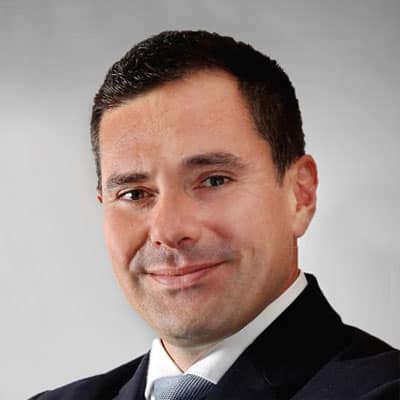Investor targeting and the data-driven IR program
It was an honor to be a panelist at the recent "Strategies to Target the Right Investors" event organized by NIRI Silicon Valley, attended by approximately 40 investor relations professionals from the Bay area.
We covered a lot of topics including the keys to setting up a successful targeting program, navigating the challenges associated with MiFID II, how to attract international and sovereign wealth investors and how to approach ESG.
Surprisingly, when we asked the audience whether they have a robust targeting plan in place, including setting KPIs and reporting to management, fewer than 1 in 4 hands went up. Witnessing such demand for practical advice, I thought it would be helpful to provide some guidance on best practices in investor targeting from our in-house expert, Ari Davies, Global Head of Corporate Analytics.
How should companies think about annual planning,
particularly as it pertains to targeting?
A: Companies should enter the fiscal year with an organized annual
IR strategy that aligns with the IR and leadership calendar and
connects with the story they are looking to tell. We believe that
the annual plan should be driven by data. We collaborate with our
clients to ensure they understand the data on current relationships
and holdings, as well as the best approach to targeting prospective
holders. When you prioritize the time necessary for these outreach
efforts by taking into account the bandwidth of all IR stakeholders
- CEO, CFO, IR team, etc. - it becomes essentially a mathematical
and data-driven exercise. Naturally, there will be changes to the
story and the macro environment can change. So, while it is
essential to be nimble, we want to be sure we're going into the
year with a plan.
What advice would you give to clients who are thinking
about targeting international investors? How does the introduction
of MiFID II play into the decision-making process?
A: In the post MiFID II world, many of your assumptions on coverage
and abilities may be in flux, especially when traveling to Europe.
When looking at a region, first look at who you want to see (both
targets and holders) and then see who has those banking
relationships. Then the firm can engage their sell-side partners to
decide which event or trip will be best to partner on to showcase
the sell-side team's expertise, clientele and regional coverage.
This puts all parties in a position to work together successfully
but doesn't commoditize the process. We're in an environment where
extra planning and additional data and insight are necessary to
ensure you can execute on your engagement plan.
How do you think clients will benefit from 'big data' in
the future when it comes to targeting?
A: Investors and issuers are already leveraging big data in new and
innovative ways. From an IR perspective, one thing we are excited
about is the ability to leverage aggregate data across our entire
universe of clients to provide benchmarking data. When companies
are able to see patterns across the universe of investors and
better understand the decision-making processes of specific current
and prospective investors, they are in a better strategic targeting
position. For example, knowing how long it takes for an investor to
initiate a position informs your approach. And knowing whether a
CEO meeting is likely to be needed before an initiation will be
made can change the way you plan investor meetings at roadshows and
conferences. We also believe clients will benefit by being able to
benchmark their IR activity and success rates versus peers.
What are other trends you are seeing in the targeting
world?
A: Leading IR teams are becoming more holistic in terms of their
outreach goals and recognize the need to bring more metrics into
the mix, as well as address investors across the capital structure.
We see more firms building a focus on fixed income investors and
becoming much more programmatic in ESG considerations such as
sustainability, governance and proxy matters.
Investor Relations has always been a unique combination of qualitative and quantitative factors, and targeting is no different. Ari and his team help our clients navigate through these challenges every day, and it was fascinating to hear the different perspectives from my fellow panelists (Todd Bielawski, Managing Director, Institutional Equity Sales, Citi and Chris Emanuel, Co-Head, Technology Investment Group, GIC) and the NIRI Silicon Valley and San Francisco chapter members in the audience.
For more information on IHS Markit investor targeting solutions, and/or to be informed of future events, please contact Michael at Michael.Miller@ihsmarkit.com or Ari Davies at Ari.Davies@ihsmarkit.com.
S&P Global provides industry-leading data, software and technology platforms and managed services to tackle some of the most difficult challenges in financial markets. We help our customers better understand complicated markets, reduce risk, operate more efficiently and comply with financial regulation.
This article was published by S&P Global Market Intelligence and not by S&P Global Ratings, which is a separately managed division of S&P Global.
